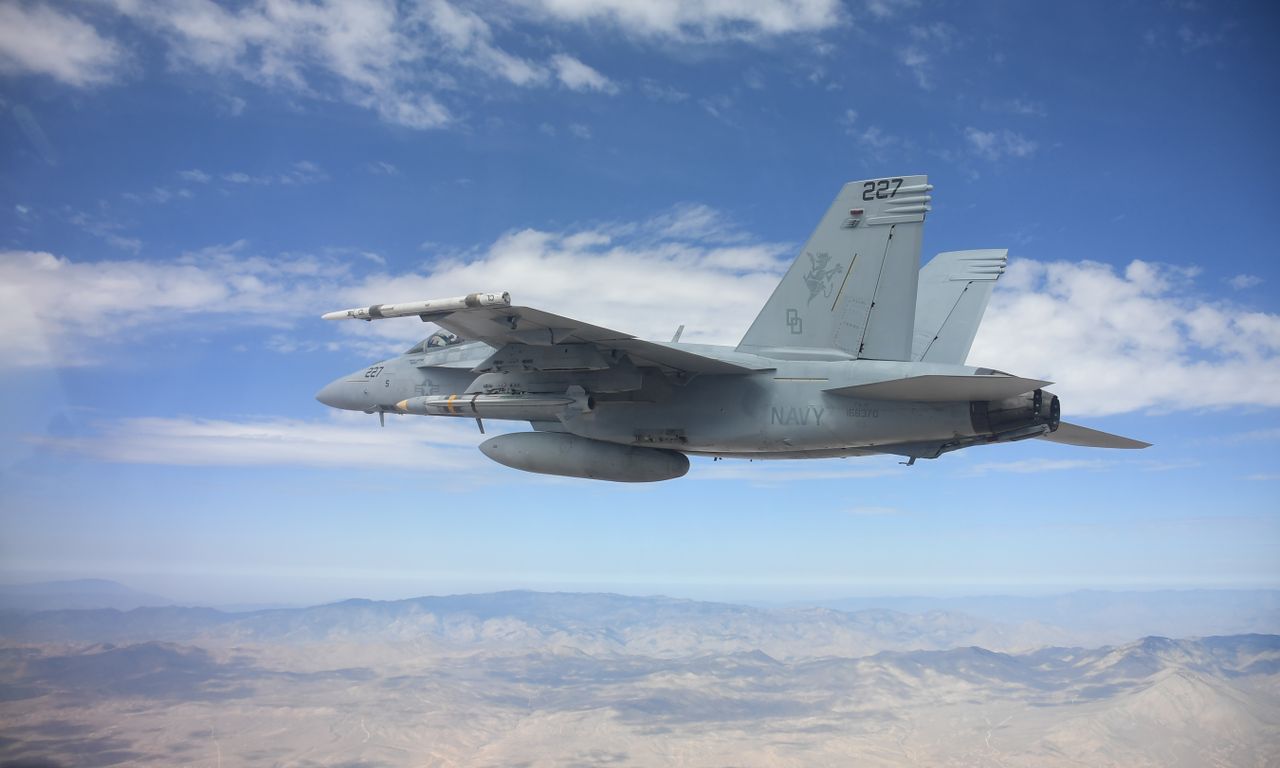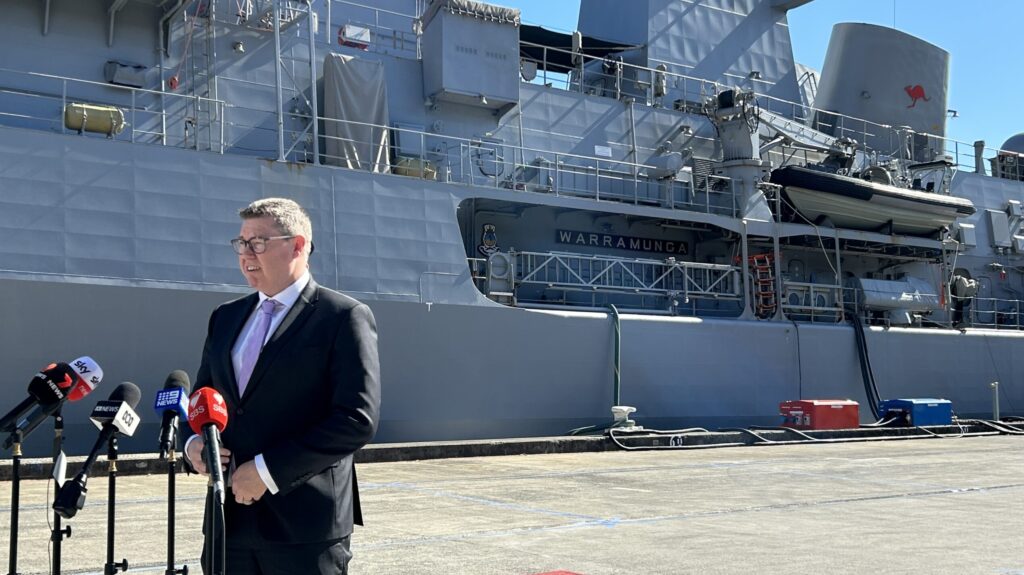Navalnews video:
View: https://youtu.be/TgsxVf0zTIc
Confirmed: this Maritime Strike missile was NG’s HALO bid.
Confirmed: this Maritime Strike missile was NG’s HALO bid.
Update: apparently the bottom was NG's pitch for Navy's HALO, and it lost.
Hard to picture how that object could host a scramjet. Perhaps they went with a ramjet solution. Hard to say without knowing the program requirements.
Update: apparently the bottom was NG's pitch for Navy's HALO, and it lost.
Hard to picture how that object could host a scramjet. Perhaps they went with a ramjet solution. Hard to say without knowing the program requirements.
Tough to imagine that the Raytheon design does not incorporate a Northrop air-breathing motor given their partnership on HAWC, HACM, SciFire, and the next variant of PrSM.
One of the HALO competitors is bidding with a Rotating Detonation Engine, I'm not sure which at the moment but Raytheon is working with P&W on an Air Force RDE programUpdate: apparently the bottom was NG's pitch for Navy's HALO, and it lost.
Hard to picture how that object could host a scramjet. Perhaps they went with a ramjet solution. Hard to say without knowing the program requirements.
Tough to imagine that the Raytheon design does not incorporate a Northrop air-breathing motor given their partnership on HAWC, HACM, SciFire, and the next variant of PrSM.
One of the HALO competitors is bidding with a Rotating Detonation Engine, I'm not sure which at the moment but Raytheon is working with P&W on an Air Force RDE program
One of the HALO competitors is bidding with a Rotating Detonation Engine, I'm not sure which at the moment but Raytheon is working with P&W on an Air Force RDE programUpdate: apparently the bottom was NG's pitch for Navy's HALO, and it lost.
Hard to picture how that object could host a scramjet. Perhaps they went with a ramjet solution. Hard to say without knowing the program requirements.
Tough to imagine that the Raytheon design does not incorporate a Northrop air-breathing motor given their partnership on HAWC, HACM, SciFire, and the next variant of PrSM.
Solid fuels suitable for ramjet RDEs have been under study by the University Consortium for Applied Hypersonics. If they found a formulation that can pyrolyze and detonate as desired while meeting the DoD insensitive munitions requirements...oh boy.One of the HALO competitors is bidding with a Rotating Detonation Engine, I'm not sure which at the moment but Raytheon is working with P&W on an Air Force RDE program
That's an interesting choice. Do you have a link for that? That does make it sound like the USN laid out a very broad requirement of range and speed and was agnostic to the propulsion method.
EDIT: isn't Raytheon's rotating detonation motor something they are researching for PrSM Incr 4? Perhaps they are bidding an air launched PrSM for the USN requirement? That would certainly have the range (that probably could cross a couple time zones with air launch) and presumably the speed at shorter ranges. Also I think the USN in general prefers ordnance without liquid fuel.
The US Navy (USN) and Northrop Grumman are negotiating the third low-rate initial production (LRIP) contract for the air-launched AGM-88G Advanced Anti-Radiation Guided Missile-Extended Range (AARGM-ER), according to a service official.
The USN awarded contracts to Northrop Grumman for the first two LRIP lots in September 2021 and December 2021, respectively. A total of four LRIP lots are planned. The USN expects to award the first full-rate production contract in fiscal year (FY) 2025.
The AARGM-ER has completed four of its six planned developmental test shots and will undergo the final two “in the next couple months”, said Captain Alex Dutko, navy programme manager for Direct and Time Sensitive Strike. The fifth test, an air-to-ground shot, was supposed to occur in March but was delayed by a rare snowfall in California, Capt Dutko told reporters on 3 April at the Navy League Sea-Air-Space 2023 conference held in National Harbor, Maryland. Operational testing is scheduled to follow developmental testing and wrap up in FY 2024.




Northrop Grumman To Provide New Strike Missile Capability for Fifth-Generation Aircraft and Beyond
LOS ANGELES – Sept. 25, 2023 – Northrop Grumman Corporation (NYSE: NOC) announced today the U.S. Air Force has awarded the company an approximately $705 million contract to deliver the Stand-in Attack Weapon (SiAW), an air-to-ground weapon that...news.northropgrumman.com
Fewer lawsuits when they run a competition, just a GAO protest that has a much shorter turn-around time.Shocking that they ran a competition to select the missile that they originally wanted to buy via a sole-source award.
It has an anti-radar seeker, when PrSM doesn't (? last I heard, anyways).Seems like NG unveiled ground launched AARGM-ER called AReS ( Advanced Reactive Strike). They also seem to indicate that to increase range they can use Mk.135 or Mk.72 boosters from the TLAM/SM families respectively. It might fit into HIMARS and a new launcher, I'm not certain about the utility of this, you can probably do much better with a PrSM.
Northrop Tests First Pieces Of Ground-Launched AARGM-ER | Aviation Week Network
The newly-branded Advanced Reactive Strike (ARES) missile and the Modular Payload System (MPS) launcher could be fielded in 4-7 years, depending on the booster configuration.aviationweek.com
The next PrSM increment will have a seeker designed around moving and emitting targets.It has an anti-radar seeker, when PrSM doesn't (? last I heard, anyways).
USAF specific changes to the warhead, probably guidance and a fully digital design allowing much easier upgrades and evolving the missile over time. The exact phase 2 specific changes have not been mentioned other than it will be a fully digital design possibly the first AF munition to meet those criteria unless the AIM-260 was also designed with similar requirements.Did USAF release any program requirements? How is SiAW going to differ from just a AAGM ER?
The next PrSM increment will have a seeker designed around moving and emitting targets.
They've talked about Inc 2 being intended to hit mobile/relocatable targets (ships, especially).
I hadn't seen the emitting part. They've talked about Inc 2 being intended to hit mobile/relocatable targets (ships, especially). Giving it a specific passive radar homing function would be new, I think.
Yeah it is no longer mentioned in its documentation. However, at the start of this effort, Army Future leaders used to quite openly talk about "moving maritime targets" and "emitting land based targets" even at one point comparing the flight profile imposed seeker performance requirements more to AF/Navy ARM's as opposed to Cruise Missiles. I suspect that Lockheed's SiAW proposal may have leveraged this but as you rightly point out, current references are strictly to moving targets.
I'm sort of thinking that given the time of flight, as long as they can get the emitter location right at launch using networked sensors, they hardly need to track the emitter itself in the terminal phase. A seeker that can identify the vehicle carrying the emitter and home on that signature might be good enough.
Combat employment.48 Missile Launches Prevented by Neutralizing 1 Adversary Fire Control Radar
AARGM probably, those have been in production since 2012 and I'd expect that the US doesn't have many old HARMs left in inventory. -ERs, however, are much newer.I wonder if we'll see the AARGM turn up in Ukraine and if the war drags on long enough the AARGM-ER?
I wonder if we'll see the AARGM turn up in Ukraine and if the war drags on long enough the AARGM-ER?
I think the current donations are so old they are AGM-88Bs.
It seems unlikely Ukraine even ever gets to AARGM.
I tend to agree. It was deemed unlikely that Ukraine would ever get ATACMS, Storm Shadow or F-16s, yet here we are. As the war drags on, the unlikely becomes the inevitable.Given the increasingly protracted nature of the war I think it will be otherwise.
It seems unlikely to me that Ukraine’s sortie rate is ever high enough to expend the volume of old HARMs available, but we’ll see.
I think that will change when Ukraine's donated F-16s go into service, aside from being able to fully utilise the HARM's various operational modes the F-16 carries a large variety of ordinance and will be very useful for air-support of ground troops (Air-support has been sorely lacking for the Ukrainian troops).
Without the HARM Targeting System pods from the F-16CJ
The question then is will the Ukrainian airforce be given some of these targeting pods?
Just how many F-16s of what vintage do we think Ukraine is going to get?
What training are those pilots going to be given?
How many hundreds or thousands of old B/C missiles are in storage just waiting to be de milled*?
Also it seems likely to me that the F-16s are still going to be limited to skimming the ground and pulling up just short of the FLOT to launch weapons anyway; chances are HARMs are used in the same manner they are now - fired at pre identified targets or blind fired.
